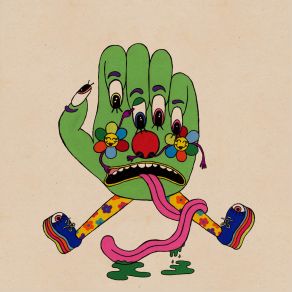Gliss Riffer
Download links and information about Gliss Riffer by Dan Deacon. This album was released in 2015 and it belongs to Electronica, Rock, Alternative genres. It contains 8 tracks with total duration of 43:47 minutes.

|
|
|---|---|
| Artist: | Dan Deacon |
| Release date: | 2015 |
| Genre: | Electronica, Rock, Alternative |
| Tracks: | 8 |
| Duration: | 43:47 |
| Buy it NOW at: | |
| Buy on iTunes $8.99 | |
| Buy on Amazon $6.93 | |
Tracks
[Edit]| No. | Title | Length |
|---|---|---|
| 1. | Feel the Lightning | 4:53 |
| 2. | Sheathed Wings | 4:08 |
| 3. | When I Was Done Dying | 4:18 |
| 4. | Meme Generator | 4:31 |
| 5. | Mind On Fire | 3:51 |
| 6. | Learning to Relax | 6:44 |
| 7. | Take it to the Max | 7:48 |
| 8. | Steely Blues | 7:34 |
Details
[Edit]After the creative maturity and ambition of 2012's America, Dan Deacon may appear to have taken a step back with his 2015 effort Gliss Riffer, which abandons the orchestrations and the more thoughtful mood of that album for a more explicitly pop-oriented vision, dominated by the playful clatter of sequenced beats, the buzz and sweep of dozens of vintage keyboards, and layers of vocals that have been vocodered into vintage sci-fi timbres or pitch-shifted into distant relatives of Alvin Chipmunk. And it is the vocals that truly stand out on tracks like "Sheathed Wings" and "Meme Generator," where Deacon's aggressive use of processing turns them into instrumental components in the music, not merely lyrics that float over the top. Not to say the words don't count on Gliss Riffer; "When I Was Done Dying" and "Learning to Relax" make it clear Deacon is a more intelligent and introspective lyricist than one might expect at first glance, and the looped chorus of "Happiness takes time, and time is my life, and I have no time, and I'm still alive..." in "Mind on Fire" gets more ominous the longer Deacon lets it play out. This is consistent with much of the material on Gliss Riffer, an album that often seems joyous on the surface, but a closer look reveals that Deacon's creative growth on America is very much present here, though molded into different forms. These tracks are cheerfully aggressive in the manner of Deacon's best-known work, but the melodies are rich and the layering of the plentiful aural sources is as artful as anything on America, if less obviously so. And the final two tracks, "Take It to the Max" and "Steely Blues," are stunning, intelligent, and engaging expansions on the possibilities of minimalism that reaffirm the depth of Deacon's musical vision. Gliss Riffer may not be the next step many expected after America, but it leaves no doubt he remains a force to be reckoned with in indie electronic, creating smart and satisfying work with a stubbornly individual perspective.